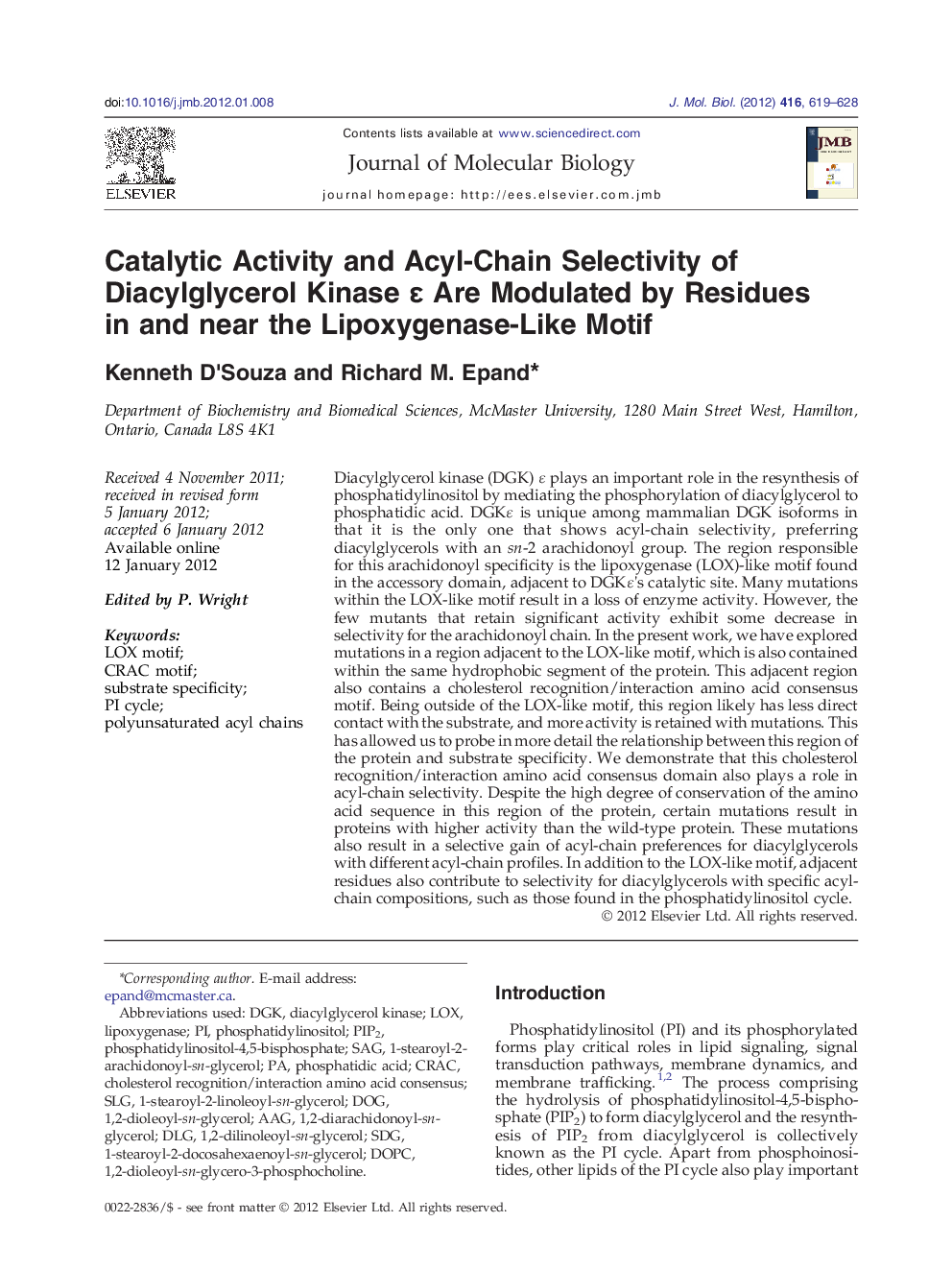| Article ID | Journal | Published Year | Pages | File Type |
|---|---|---|---|---|
| 2184697 | Journal of Molecular Biology | 2012 | 10 Pages |
Diacylglycerol kinase (DGK) ɛ plays an important role in the resynthesis of phosphatidylinositol by mediating the phosphorylation of diacylglycerol to phosphatidic acid. DGKɛ is unique among mammalian DGK isoforms in that it is the only one that shows acyl-chain selectivity, preferring diacylglycerols with an sn-2 arachidonoyl group. The region responsible for this arachidonoyl specificity is the lipoxygenase (LOX)-like motif found in the accessory domain, adjacent to DGKɛ's catalytic site. Many mutations within the LOX-like motif result in a loss of enzyme activity. However, the few mutants that retain significant activity exhibit some decrease in selectivity for the arachidonoyl chain. In the present work, we have explored mutations in a region adjacent to the LOX-like motif, which is also contained within the same hydrophobic segment of the protein. This adjacent region also contains a cholesterol recognition/interaction amino acid consensus motif. Being outside of the LOX-like motif, this region likely has less direct contact with the substrate, and more activity is retained with mutations. This has allowed us to probe in more detail the relationship between this region of the protein and substrate specificity. We demonstrate that this cholesterol recognition/interaction amino acid consensus domain also plays a role in acyl-chain selectivity. Despite the high degree of conservation of the amino acid sequence in this region of the protein, certain mutations result in proteins with higher activity than the wild-type protein. These mutations also result in a selective gain of acyl-chain preferences for diacylglycerols with different acyl-chain profiles. In addition to the LOX-like motif, adjacent residues also contribute to selectivity for diacylglycerols with specific acyl-chain compositions, such as those found in the phosphatidylinositol cycle.
Graphical AbstractFigure optionsDownload full-size imageDownload high-quality image (49 K)Download as PowerPoint slideHighlights► We explore regions in the accessory domain of DGKɛ that affect substrate specificity. ► Mutations in this region can result in enhanced activity and changes in specificity. ► Accessory domain mutations in DGKɛ affect the acyl-chain specificity of substrates. ► Enrichment of particular acyl chains in certain lipid classes is a consequence.
